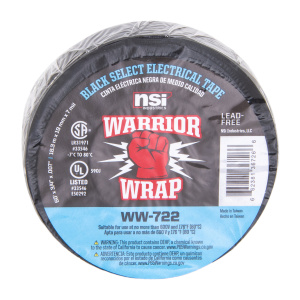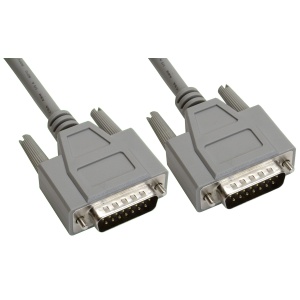Introduction
With the digital age in full swing, it’s no surprise that our homes are becoming as smart as our phones. The next frontier of home automation is integrating alarm and security into your smart home. This modern marvel allows you to monitor, secure, and control your home’s safety measures, all at the tap of a screen. But how do we harness this technology effectively? Let’s delve into it.
Integrating Alarm and Security into Your Smart Home: The Basics
Before we dive headfirst into the pool of smart home security, let’s get our feet wet by understanding what exactly we mean when we say “integrating alarm and security into your smart home.” Simply put, it’s the process of connecting all your security gadgets (like alarms, security cameras, and sensors) to your home automation system. This integration enables you to control and monitor your home’s security from a centralized interface, typically your smartphone.
Why Opt for Smart Home Security?
Now you might ask, “Why should I go to the trouble of integrating security into my smart home?” Well, the benefits are as plentiful as fish in the sea. For starters, having an interconnected security system allows you to monitor your home round the clock, from anywhere in the world. Moreover, you can receive real-time alerts in case of any unusual activity.
Essential Components of a Smart Home Security System
Creating a fully integrated smart home security system may sound like a Herculean task, but it’s actually a piece of cake if you have the right components. These include smart alarms, surveillance cameras, door and window sensors, smoke detectors, and a central hub that ties everything together.
Best Practices for Smart Alarm Integration
Setting up a smart alarm system is not just about buying the most expensive gadgets. It’s about creating a system that fits your needs like a glove. So how do you make sure your smart alarm integration hits the bullseye?
Choosing the Right Smart Alarm
There’s an old saying: different strokes for different folks. The same holds true for smart alarms. Some alarms are designed to detect intruders, while others are meant to alert you to environmental dangers like fire or gas leaks. Your choice should align with your specific needs and concerns.
Placement is Key
Location, location, location! Where you place your smart alarms can make the difference between detecting a threat early and facing the consequences. Install alarms in strategic places like entrances, exits, and high-risk areas to ensure optimal coverage.
Securing Your Home with Smart Surveillance
Ever heard the saying, “seeing is believing”? In the realm of home security, a smart surveillance system lets you see everything, ensuring that your home is safe and sound.
Choosing the Right Surveillance Cameras
When it comes to picking a surveillance camera, don’t judge a book by its cover. Look for features like high-definition video, night vision, and motion detection. Moreover, a camera that can be controlled remotely adds another feather in the cap of convenience.
Mastering the Art of Surveillance Placement
You’ve got your top-notch cameras. Now, where to place them? Position them at entrances, windows, and other vulnerable points in your home. Make sure they cover as much area as possible and are out of easy reach to avoid tampering.
Smart Sensors: Your Home’s Watchful Protectors
Sensors are the unsung heroes of home security, constantly on the lookout for potential threats. With smart sensors integrated into your home, you can rest easy knowing your fortress is well-guarded.
Types of Smart Sensors
There are a plethora of sensors available, each serving a different purpose. Door and window sensors detect unauthorized entries, smoke sensors alert to potential fires, while water sensors warn about possible leaks. Choose the types that best serve your needs.
Optimal Sensor Placement
Effective sensor placement is as crucial as choosing the right type of sensor. Install door and window sensors on all entry points, smoke sensors in kitchens and bedrooms, and water sensors in bathrooms and laundry rooms.
The Role of the Central Hub
Think of the central hub as the conductor of your home’s security orchestra. It receives information from various devices and triggers the appropriate actions. In addition, it enables you to control and monitor your security system from a single interface.
Choosing the Right Central Hub
There’s no one-size-fits-all when it comes to choosing a central hub. Some work with specific brands, while others are more versatile. Make sure the hub you choose is compatible with your other devices and has a user-friendly interface.
Positioning the Central Hub
The central hub should be placed in a central, secure location. It needs to be within range of all devices and away from any potential interference. Remember, if your hub is compromised, your whole system could be at risk.
FAQs
What is a smart home security system?
A smart home security system is a network of devices that work together to secure your home. It includes devices like alarms, cameras, sensors, and a central hub, all of which can be controlled remotely through an app or interface.
How does integrating alarm and security into your smart home benefit me?
By integrating alarm and security into your smart home, you can monitor and control your home’s security from anywhere, receive real-time alerts, and automate security responses.
How can I choose the right smart alarm system?
Your choice should be based on your specific needs and concerns. There are alarms designed to detect intruders, and others meant to alert you to environmental dangers. Make sure to pick one that aligns with your requirements.
How important is the placement of surveillance cameras and sensors?
The placement of surveillance cameras and sensors is crucial for ensuring optimal coverage and detection. Cameras should be positioned at entrances, windows, and other vulnerable points, while sensors should be installed on all entry points and high-risk areas.
What is the role of the central hub in a smart home security system?
The central hub acts as the conductor of your home’s security orchestra. It receives information from various devices, triggers the appropriate actions, and allows you to control and monitor your security system from a single interface.
How do I ensure my smart home security system is secure?
Make sure your central hub is placed in a secure location and is password-protected. Regularly update your devices’ software to fix any vulnerabilities, and ensure your home network is secure as it is the backbone of your smart home security system.
Conclusion
Integrating alarm and security into your smart home is a smart move towards safeguarding your abode. It provides enhanced protection, convenience, and peace of mind. But remember, every home is unique, and so is its security needs. Hence, it is important to customize your security system to fit your needs.
With this guide, you’re now equipped to make informed decisions about integrating alarm and security into your smart home. So why wait? Unlock your smart home’s potential today!












